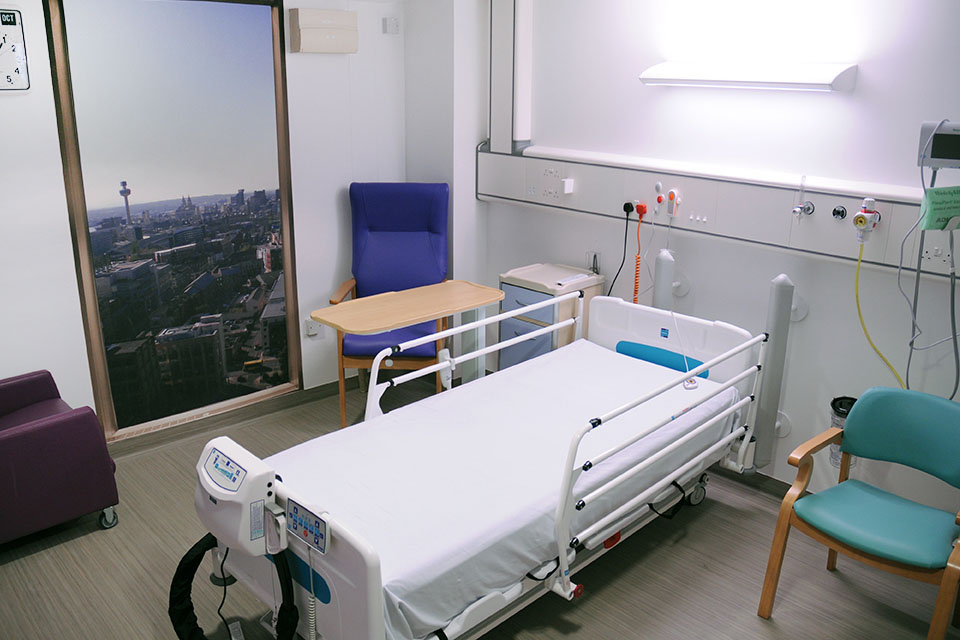
With the assumption that the NHS will face further virus outbreaks, perhaps not as severe as COVID-19 but nonetheless a severe strain on resources, the need for effective infection control within hospitals should be a major priority in the future redevelopment or building of new hospitals.
A study of the impact on infections of the move from an old hospital to a new building, with a high proportion of single rooms (Brunel Building, Southmead Hospital, North Bristol Hospital Trust), published in 2017, showed that the number of bed days lost to norovirus was “significantly lower. Increased availability of single rooms had an impact on the transmission of highly contagious norovirus infection, [which is] dispersed via the airborne route.”
The study concluded: “Single room isolation facilities are essential in acute hospitals and will become increasingly important as highly transmissible and increasingly resistant organisms colonise and infect patients…. There was a significant reduction in the bed-days lost and ward closures due to norovirus infection.” (i)
An earlier study by King’s College, London, was carried out into single rooms at Tunbridge Wells Hospital in Pembury, Kent (opened in 2011). The hospital was the first in England to contain only single-bed rooms, and replaced a Victorian hospital and former workhouse. The researchers examined the experience of patients and staff both before and after the move. They looked at an admissions ward, a surgical ward, an older people’s ward and a post-natal ward.
Patients reported more privacy, dignity and confidentiality in single rooms. They felt the privacy enabled them to disclose to medical staff and relatives more sensitive information. They slept better and no longer had the indignity of using toilets within the earshot of others.
The downside was that immediately after the move to the new hospital, there was an increased incidence of older patients falling. But within nine months this had been remedied, as nursing staff became more familiar with the new routines of working with single rooms, and as the disturbance of the move for older patients had receded.
Two thirds of all patients preferred single rooms, with older patients (over 80) being the ones who most preferred to be in wards with other patients. (ii)
Another advantage of single rooms was highlighted by Professor Hugh Pennington, a leading microbiologist based at Aberdeen University, and a firm advocate of the single bed system.
“There is a consensus view in Europe and North America that single rooms in hospitals are important in preventing and controlling healthcare associated infections……..Single rooms facilitate family involvement in patient care and increase the opportunities for treatment at the bedside. They enable better bed management, abolish gender bed blocking (when a patient cannot be admitted to an empty bed because the others in the shared accommodation are of the opposite sex) [our italics] and lead to fewer patient transfers.
“…..The evidence that physical barriers are good at preventing the spread of microbes is strong. A recent study in Canada on the effect of changing intensive care unit arrangements from multibed to single rooms showed falls in rates of acquisition of clostridium difficile of 43% and staphylococcus aureus of 47%.”
These reduced infection rates resulted in a 10% reduction in the length of time patients needed to stay in hospital. (iii)
Professor Pennington’s views were echoed in an article in the Journal of Clinical Microbiology and Infection, which concluded:
“Single bed occupancy reduces air-borne as well as cross-transmission of pathogens between patients…..Scientific evidence should lead to an increase in the number of single rooms in hospitals in such numbers that all contagious patients can benefit.” (iv)
Research has mainly concentrated on nosocomial infections (hospital-acquired infections like MRSA and C-diff), as well as hospital-acquired influenza (HAI). A 2016 European study compared double-occupancy rooms (not common in Britain) with single rooms, and concluded:
‘We observed higher HAI risk among patients hospitalised in double-occupancy rooms than those in single-occupancy rooms. In addition to being more appropriate for global patient care regarding privacy, rest, familial support, cost and confidentiality, single occupancy rooms are reducing the risk of hospital-acquired infections, including influenza.” (v)
The design of single bed rooms not only eliminates the risk of cross-infection between patients, but also, with the provision of sinks near the entrance to the room, underlines the need for scrupulous handwashing by all staff (which we have all learned during the pandemic is a key to controlling infection), which is not easy on a ward where washing facilities are shared.
Rooms are designed for diagnostic equipment to be brought to the patient (portable X-Ray machines etc.), which again reduces contact with other patients and even staff members. The firm of architects which designed the rooms at the Pembury Hospital, Anshen and Allen, listed the design criteria they worked to:
- Bed head placed in direct sight line from door with large vision panels
- Clinical basin at entrance
- Staff zone kept at entrance with bed-head unit on clinical side
- Naturally ventilated rooms
- Bed head on same side as en-suite door to reduce risk of falls
- En-suite door design to allow ease of manoeuvring and access. (vi)
One of the initial objections to single rooms came from nursing staff, who had to walk further to monitor patients. But modern designs have eliminated this problem, and single rooms have actually increased the nurse-patient contact time.
(i) Impact of moving to a new hospital build, with a high proportion of single rooms, on health-care associated infections and outbreaks. E.S.R. Darley et al. Journal of Hospital Infection June 2017
(ii) The Impact of moving to Single Room Accommodation King’s College 2013
One size fits all? Mixed methods evaluation of the impact of 100% single-room accommodation on staff and patient experience, safety and costs. BMJ. Maben et al 2015
Single Rooms and patient safety: before and after study with non-equivalent controls. NCBI Bookshelf. Maben et al
(iii)Should hospitals provide all patients with single rooms? BMJ 2013 Professor Hugh Pennington
(iv) Should we provide acute care in single room occupancy Journal of Clinical Microbiology and Infection 2016 Philippe Brouqui
(v) Hospitalisation in double-occupancy rooms and the risk of hospital-acquired influenza: a prospective cohort study 2016 European Society of Clinical Microbiology and Infectious Diseases E. Munier-Marion et al
(vi) New Pembury Hospital, Tunbridge Wells, Kent, United Kingdom 2011 EDAC Advocate Firm Project
Author: Jean Ritchie, NHC member. June 2020.
